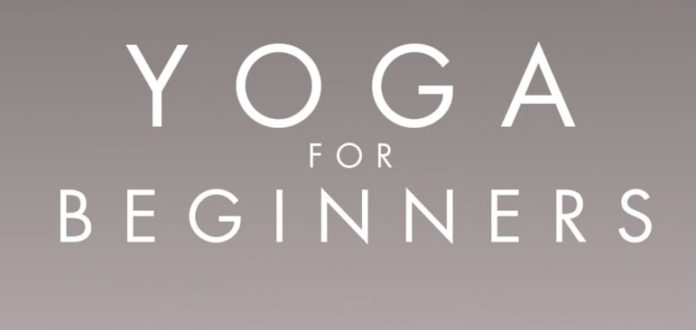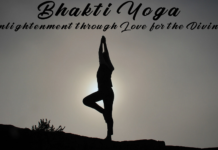Are you new to Yoga? If yes, then checkout this yoga for beginners guide with beginner yoga sequences, tutorials on different yoga poses for beginners and all about the basics of yoga. We will help you take your will to do Yoga to the next level with our tips and tricks!
Yoga For Beginners : General Practices and Advices
If you are new to practicing Yoga, then this section is very important for you. Check out these dos and don’ts that you must be aware of before starting your Yoga journey.
When Not To Exercise Yoga
There are certain times of the month and life depending on our gender, when our body does not allow us to perform Yoga. Instances like menstrual cycle, pregnancy, high blood pressure and injuries to some sensitive parts of the body, like knees, wrist, shoulder and neck do not permit us to practice Yoga. In these cases, you should be very careful and must check with your doctor before doing any Yoga posture.
Go Slow And Easy
When you start doing Yoga, your body will take time to adjust to the postures and exhaustion. Yoga postures can lead to change in blood flow intensity, muscle stiffness and other body aches if you are suffering from conditions like Fibromyalgia. If you have medical conditions like asthma and shortness of breath, you must check your lung capacity before doing breathing exercises. Start slowly and follow the steps below to make your body used to the Yoga postures:
- Slowly increase the moderation of your exercise
- Try to hold postures for longer periods of time
- Elevate the hardness level
- Practise challenging Yoga postures
Check Which Postures Work For You
It is not always necessary that each and every Yoga posture and alignment works for you. Go through the instruction of various Yoga poses and experiment and see which one suits your body to avoid any injuries in due course of time.
Postures done on the floor are usually easier than those done while standing as they require less forte and stability.
Choose Carefully What To Wear
If you are planning to wear tight jeans and tee and perform Yoga, it’s a very bad idea! Yoga requires breathable, loose, comfortable clothes or stretchable tights. Ensure that you wear something that does not confine your movement.
Keep Your Stomach Light
Avoid eating or drinking anything just before starting your Yoga session. You can eat 2-3 hours prior to the session but not immediately before it.
Keep A Check On The Duration Of Your Session
Since you are a beginner, it’s important that your properly time your Yoga sessions. The average daily practice should be 15-90 minutes and at the most 5-6 times a week. It’s better to practice more in shorter intervals at the initial stages to help your body adjust to the postures and exhaustion level.
Warm Up Before You Start In Full Swing
This is the most important part of any Yoga session. You must warm up your body before you go on to practise Yoga postures. Suksham Vyayama or warm up exercise help your body loosen up and relax. Rotate your neck on both the sides to relieve any stiffness.
All Do You Need To Prep Up Yourself For Yoga
Yoga does not require any particular items to be used while performing it. There are still a few things that you must have for an enjoyable and comfortable Yoga experience.
| Name | Function |
|---|---|
| Yoga Mat | It provides comfort with padding and an anti-slip surface for performing different postures. There thickness is usually 6-10 mm and thicker mats are recommended by wooden floorboards. |
| Yoga Clothing | There are many brands that design and manufacture special clothing lines for Yoga. These clothes are loose and stretchable and do not restrict your movement while perform even the most complicated postures. |
| Yoga Books | You can fetch from Yoga for Beginner books from your college or office library and read more about different Yoga techniques and practices. The more you read, the more knowledge you collect. |
| Yoga Shapes | Yoga blocks and balls are two Yoga props that you can keep with yourself. Yoga ball can help you while stretching and the Yoga block will help you in balancing your body while performing postures while standing. |
How to start yoga practice?
Performing Yoga is not an easy task and you must know the right tips and techniques to kick-start your journey into the world of Yoga. Check out these 4 basic Yoga for beginners steps before you start Yoga!
Proper Breathing Technique
The bases of Yoga or the most essential technique to get any Yoga posture right is to learn the proper breathing technique. Breathe in and out through the nose into the gut. Learn the proper Pranayama technique from Yoga teachers to get the perfect breathing cycle. The Dirgaya Pranayama technique will teach you how to breathe differently into the three parts of your belly: the low belly, the low chest and the low throat.
Always Start With Meditation
Before you start your Yoga session, your body as well as your mind must be completely relaxed. Perform a prayer or meditation (learn meditation techniques, if you do not know any) before you kick-start your Yoga session. If your concentration is not set, you may not get the postures right.
Warm Up Before You Go All In
As already mentioned in the Yoga advice section, you must warm up your body before performing any Yoga posture. Try the simpler postures like cat, dog, triangle and forward bend postures in the beginning.
Always End With Shavasana
Remember to always end your Yoga session with Shavasana. This posture involves simply lying on your back and relaxing your body with closed eyes for 15-20 minutes. Some people feel so relaxed while performing Shavasana after a healthy Yoga session that they actually go off to sleep.
6 Basic Poses To Get You Started – Yoga For Beginners Guide
Tadasana (The Mountain Pose)
This pose aims at teaching an individual how to stand stably with magnificent firmness like the mountain.The word “Tada” means mountain. It involves a lot of body muscles and concentration.
Stand with your heels apart and place your arms beside the trunk. Slightly lift and blow-out your toes, then lay them delicately down on the ground. Poise your body weight on your feet. Lift your ankles and firm your thigh muscles while circling them inwards. As you inhale, extend your trunk and when you exhale, release your shoulder blades away from your head. Your ears, shoulders, hips and ankles should all be in one line. You can check your orientation by standing alongside the wall initially.
Vrikshasana (The Tree Pose)
This pose gives you a sagacity of foundation. It improves your steadiness and toughens your legs and back. It imitates the steady bearing of a tree. All you have to do is place your right foot high up on your left thigh. The sole of the foot should be plane and placed firmly. Keep your left leg straight and find your stability. While breathing in, elevate your arms over your head and bring your palms together. Make sure that your spine is erect and take a few deep breaths. Slowly breathe out, bring your hands down and free your right leg. Repeat the same with the other leg and form a cycle.
Trikonasana (The Triangle Pose)
It expanses the legs and upper body, activates the hips and stimulates deep breathing, leaving one with revitalizing effects. All you have to do is stand firmly with your feet apart. Stretch your right foot out at a 90 degree angle while keeping the leg closer to your upper body. Keep your feet pressed against the floor and balance your weight equally on both feet. Breathe in and as you breathe out bend your right arm and make it touch the floor while your left arm goes up. Keep your waist erect. Ensure that your body is properly bent sideways and not forward or the wrong way. Repeat on the opposite side as well.
Kursiasana (The Chair Pose)
This pose is very helpful in strengthening the muscles of the legs and arms. It forms your resolve and has an enlivening effect on the body and mind. All you have to do is, stand straight with your feet marginally apart. Stretch your arms but do not crook your elbow. Breathe in and bend your knees, pushing your pelvic portion down as if you are sitting on chair. Keep your hands parallel to the floor and keep your back elevated. Bend slowly and make sure you do not sprain your back while performing this asana.
Naukasana (The Boat Pose)
It stiffens the abdominal muscles and toughens the shoulders and upper back area. All you have to do is lie straight on the mat with your feet together and hands placed by your side. Take a deep breath and while breathing out. Gently lift your chest and feet from the floor. Stretch your hands in the direction of your feet. Your eyes, fingers and toes should be absolutely in one line. Hold the posture till you feel some tautness in your bellybutton area as your abdominal muscles begin to contract. Breathe out, straighter your legs, put them on the ground and relax.
The Child’s Pose
It looks like the embryo’s posture. It is also called the posture of surrender. It reinstates vigour physically, mentally and emotionally. Practice this pose with closed eyes, listening to the sound of your own breath. Bend your knees and sit on your heels. Place your hips on your heels. Lower your head on the mat or floor and bring your hands forward by your side. Using a thick mat is recommended for comfort. Press your thighs touching your chest and breathe slowly.




